GAPS Basics: Cooking Fats
If you're new here, you may want to subscribe to my RSS feed. Thanks for visiting!
Go here for other GAPS basics posts.
After possibly a lifetime of hearing that fat is bad for you and the cause of all diseases here is Dr Campbell-McBride telling you to eat them in great quantities. An even bigger shock is that those vegetable oils that were supposed to rescue us from heart disease and allow us to eat our polyunsaturated fat cake without guilt are actually to be avoided like they are poison. On GAPS fat is good for you and a source of energy for your body to run on. Many have found that the more saturated fat they eat the faster they heal. It sounds crazy at first if your brain is filled up with information from the USDA, FDA, and other government sanctioned sources (who got all of their information from studies funded by the people who are selling you those vegetable oils), but over time you will love how good it makes you feel and recognize the healing it is bringing to your body. This article is a good primer on why saturated fats are good for you.
So first I will start with the fats that can be used both in cooking and cold.
Butter
Butter is made from the fat found in milk. It is generally considered to be lactose free and has very little dairy casein in it. Many (but not all) on dairy free or lactose free diets can tolerate butter. Butter from grassfed cows contains activator x aka vitamin K2 and is very important for tooth and bone health. Raw butter also contains Butyric Acid which helps to heal the gut lining. It is truly a super food. Butter will burn with high heat cooking and is best used in baking and moderate heat dishes. It is important that the butter you eat is from grassfed cows. This will have all of the vitamins and minerals that is to be expected in butter. Grain fed cows, even if that grain is organic, will deliver inferior milk and butter that is missing the x factor found in the milk of grassfed cows.
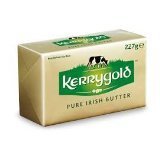 |
| This is my favorite grassfed butter. |

Ghee
Ghee is a traditional Indian fat. It is made by heating butter until it separates so that the pure fat can be removed. Traditionally it is cooked until the dairy proteins caramelize but in the GAPS book NCM describes making Ghee that doesn’t use this method. Instead what she calls Ghee in the book many would call clarified butter. The main difference being that in Ghee the proteins carmelize and lightly flavor it while with clarified butter they don’t. In both cases you remove the pure butter fat and all but the most sensitive will be able to tolerate Ghee early on in the diet. If it is made from grassfed cows it will contain vitamin K2 but Ghee isn’t ever raw so it won’t contain the benefits of raw butter. Ghee can be kept at room temperature for a year or more and is good for high heat cooking like other fats.
High Vitamin Butter Oil
I will take a minute to talk about this now although it really isn’t a cooking fat but a supplement. This is extracted from raw butter in a cold method that removes the proteins but leaves behind the fat. Many think that it is the same as Ghee but since it is raw it contains some factors that are lost in the cooked ghee.

Lard
This is the rendered fat from a pig. Leaf lard is the best kind and is found around the internal organs. The fat is cooked to purify it. This process gives you something called cracklins that are the cooked proteins that were mixed in with the fat. It is important that you purchase pure lard. Much of the stuff sold at the grocery store is partially hydrogenated and has additives and is not good for you. Lard from pigs who are outside in the sun will contain more vitamin D than the fat of any other land animal. Lard from pigs raised indoors will contain virtually none. Lard can be kept at room temperature for a month or two but it is best to refrigerate or freeze it for longer storage.
Tallow
Tallow is the rendered fat of a beef. It has a stronger flavor than lard and some find it unpleasant. I tend to use it in stronger flavored dishes. It is also harder than lard at room temperature and is an excellent fat for making pemican because of that. It is rendered in the same way as lard and can be kept at room temperature much longer. I have kept lard on the shelf for 6 months without it going rancid. USWellness Meatssells both tallow and beef suet. Suet is just the ground fat before it is rendered. I usually render my own and have not tried theirs.
Other animal fats
The fat of any animal may be rendered to make a fine cooking fat. Many render the fat from their chickens to use for cooking while frying up the skin for a crunchy snack. Also the fat that rises to the top of the broth while it is in storage may be used for cooking as well.
Coconut Oil
Coconut oil is pressed from the flesh of a coconut. It is a pure fat that contains medium chain fatty acids that are easy to digest and very beneficial. It also contains lauric acid. The only other source of lauric acid is human breast milk.
Coconut oil is strongly anti-microbial and may cause die off symptoms in some people so it should be tried cautiously on the
GAPS diet. It is very nourishing to the thyroid and can benefit brain function and gives many extra energy.
Coconut oil is traditionally used for cooking in the tropical islands where coconuts grow. The two main kinds of coconut oil are the traditional coconut flavored oil and the expeller pressed oil that is flavorless. Both are GAPS legal and both have healing qualities although some say that the different grades and methods of making the oil have an impact on how nourishing and healing a particular one is.
Palm Oil
Palm oil is another tropical oil that is traditional for cooking among the people who live where it is grown. It has a strong flavor and an orange or red color. It is very high in vitamin E. It also has been refined to make a non-hydrogenated shortening replacement. This form has a neutral taste and is also fine to use for high heat cooking and baking.
Cocoa Butter
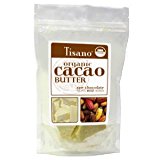

Of course any of the above fats can be enjoyed raw and unheated as well as being used in cooking. The following fats should only ever be used raw.
Extra Virgin Olive Oil
This is the first fat I am listing that isn’t intended for cooking on GAPS. It should be kept raw and is best served over salads and poured over foods that are on the plate. It also can be used to make mayonnaise. There was a scandal that broke in 2007. You can read
this blog post by Mama Natural about it. It also lists the olive oils that they found to be good ones including this one I have linked. Another great source is
Chaffin Family Orchards. Their late harvest olive oil is extremely mild and we love mayonaise made with just that.

These are very delicate and must be kept refrigerated and only purchased if cold pressed. Macadamia nut oil and Avocado oil are both very mild oils that can be used to make tasty mayonnaise. They go rancid easily and must be protected to prevent that.
Edited to add: I have learned that avocado oil has a high smoke point and is probably ok for occasional sauteing but you wouldn’t want it to replace the important saturated fats in your diet. Also there is some question about cooking destroying some of the beneficial components of it. Using it cold is still probably the best way to get all of the benefit.
Sesame oil also has a mild delicate nutty flavor and can be added to Asian dishes after they are cooked to enhance their flavor. It also comes in a toasted version with a much stronger flavor.
Pumpkin seed oil has a strong flavor that I really like on my salads. It contains zinc which is an essential mineral that many GAPS people are low in. Pumpkin seed also have been used traditionally to prevent and treat parasites, something that many GAPS people have to deal with.
Fermented Cod Liver Oil
Like the butter oil this is not a culinary oil but it seems amiss to not at least mention it. This is cod liver oil produced in the traditional way. It is the only cod liver oil that you can purchase that is guaranteed to contain all of the vitamins found in the livers and to never have synthetic vitamins added to it. It is one of the few supplements that is recommended to nearly everyone on the GAPS diet. Just a few weeks ago I found myself (unsucessfully) fighting a painful sinus infection. I was reminded that large doses of FCLO can quickly eliminate a cold so I decided to give it a try. I gave myself 1 tsp 3x a day and within 2 days I was almost completely recovered! I wouldn’t be without this wonder food in my home. We even took it with us when we went on vacation last fall.
 |
Cinnamon Tingle seems to be the current favorite flavor among my friends. |
So what are your favorite GAPS fats? Which ones haven’t you tried yet? Did I leave any out? Which ones do you not care for? Do you take your FCLO on a regular basis? Let me know in the comments.




![]()








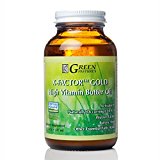
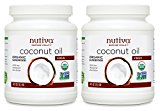
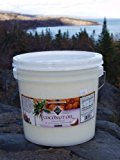
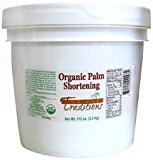








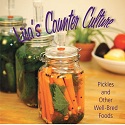
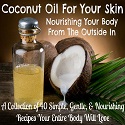
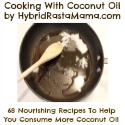
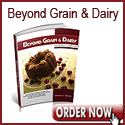
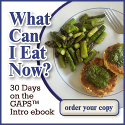
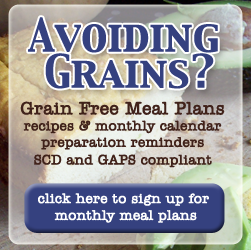
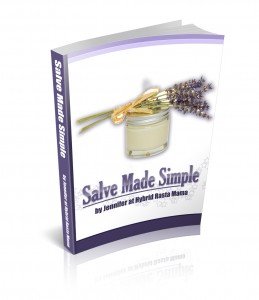
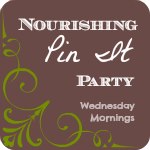

Love and use all of these. Thanks for the "primer"- great info and easy to refer to!
Thanks for the "primer"- great info and easy to refer to!
Hi Patty, good stuff!
By any chance have you ever come across a “poster” on a bog, explaining healthy fats?
I remember seeing one about a year ago, with very beautiful illustrations, this was a poster you could buy and hang in your kitchen. This was before pinterest, unfortunately, and I can’t seem to find it. Just wondering if you know of such a thing. Thanks!
Sorry Joan. I don’t think I have seen that.
Patty, what do you do for your EFA’s besides FCLO? I am really trying to find an economical way to get our nut oils in the ratio NCM recommends and also the fish oil, but all I’m finding are very expensive oils.
Also, I made a purchase from Mountain Rose Herbs today, and I clicked on it through your site, hoping you’d get a profit (I love your blog after all), and I saved my shopping cart, and later came back to complete the purchase, but forgot to get on through your site again. Do you know if I have to complete the purchase after getting on through your site, or if I can do what I did to help you earn a profit (or do you even earn a profit from that?).
Thanks,
Erin
I take a fish oil called Omega 3 Mood by Country Life. For nut oils I don’t have a good solution. I use pumpkin oil on salads (like olive oil) but I need to get better about the rest.
I do get a small profit from purchases when you click through my site. Thank you for doing that! It should have worked if you came back within 24 hours to finish your purchase. Otherwise I think that it won’t “remember” who you clicked through.
I don’t know if I missed it, but what is GAPS?
Debbie,
I wrote a post answering that very question.
http://www.lovingourguts.com/2012/01/what-is-gaps.html
Hi there,
I started the gaps diet about 6 months ago. I was doing well and now recently have gone severely down hill. Not sure what caused it. I’m trying to figure out how much fat I should be having in a given day. All I read is that you should have as much as you can but this obviously isn’t clear.
Any help would be appreciated.
sorry forgot to select notify via email - heroastudios@gmail.com
Thanks